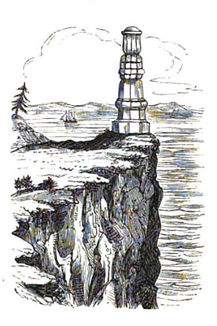Amur
The Amur [ aˈmuːɐ̯ ] or Heilong Jiang ( Russian Аму́р , Chinese 黑龙江 , Pinyin Hēilóng Jiāng ) is a 2824 kilometer long river in China and Russia that flows into the northern Pacific .
etymology
Amur from Ewenisch Tamur for Great River ; Heilong Jiang from Chinese 黑龍江 , Pinyin Hēilóng Jiāng for Black Dragon River .
course
The river is created 61 kilometers west of Mohe by the confluence of the Argun and the Schilka .
After this river wedding, the Amur flows almost 2000 kilometers as a border river to the southeast. He takes the water from Bureja , Huma He , Seja and Songhua Jiang (Sungari). In front of the Sichote-Alin ("coastal mountains") it bends northeast in the Sino-Russian lowlands. The Ussuri flows in above Khabarovsk , and the Amur now flows to the mouth on Russian territory. Flowing further northeast, it absorbs the water of the Amgun .
The Amur flows slightly east of Nikolayevsk into the Tatar Sound , a strait between the Sea of Okhotsk and the Sea of Japan on the northwestern edge of the Pacific . The estuary is further east across the northern end of the Sakhalin Island .
shipping
The Amur is navigable along its entire length .
The water volumes measured at Komsomolsk (in March an average of 984 m³ / s, in September, however, 20,702 m³ / s; long-term average 9,819 m³ / s) come from a catchment area of 1,730,000 km².
Amur river system
Together with the left source river of the Amur, the Schilka, and its right source river, the Onon , the 4411 kilometer long river Onon-Schilka-Amur is created ; together with the right-hand Amur source river, the Argun, forms the 4444 kilometer long Argun-Amur river . On the Argun lies Hailar (today: municipality of Hulun Buir ) and about 150 kilometers to the west of it is the Hulun Lake (Hulun Nur), which actually has no contact with the Argun, which flows further east from it. In years with particularly high levels of rainfall, this lake, which is normally without any drainage, overflows on its north bank and flows into the Argun after about 30 kilometers. This gives the Cherlen (Kerulen), which flows into this lake, a connection to the Argun, which from there forms the Sino-Russian border in its lower reaches for 944 kilometers and then merges into the Amur, so that the 5052 kilometer-long Kerulen- Argun-Amur is born.
The pure Amur River is about as long as the Danube . The Kerulen-Argun-Amur river is the seventh longest on earth .
Places on the river
- Mohe - border town in China
- Blagoveshchensk - border town and oblast capital in Russia
- Heihe - prefecture -level city in China
- Aigun - border town in China
- Sijiazi - Manchurian border community in China
- Tongjiang - independent city in China
- Khabarovsk - regional capital in Russia
- Komsomolsk-on-Amur - big city in Russia
- Nikolayevsk-on-Amur - city in Russia
history
In the first agreement between China and a European power , the Treaty of Nerchinsk , Russia recognized the area on both sides of the Amur as Chinese territory on September 6, 1689. In 1858, with the Treaty of Aigun , the Amur became the border between the two states. However, there have been several border conflicts on this section of the border in the (recent) past.
nature
The Amur Basin, in which the coniferous forests of the taiga meet the bush and swamp landscape of the tundra , is a region with great biodiversity . Here are Siberian tiger , wolf , lynx , brown bear and moose same procedure as for deer , Amur Leopard , Asiatic , mandarin duck and Indian Paradise Flycatcher . It is also an essential area for the Asiatic crane , and every year six different species of crane stop in the region. The red-necked crane and the white-naped crane also breed here .
See also
- List of the longest rivers on earth
- Baikal-Amur Mainline - an important railway line
Web links
- Amur near Komsomolsk - hydrographic data on the UNESCO website
Individual evidence
- ↑ Amur in the State Water Register of the Russian Federation (Russian)
- ↑ Amur Basin, Komsomolsk Station at University of New Hampshire - Global Runoff Data Center , accessed January 24, 2013
- ↑ Peter Matthiessen : The Kings of the Skies - Traveling with Cranes , Fischer Taschenbuch Verlag, Frankfurt am Main 2010, ISBN 978-3-596-18195-7 , p. 18



